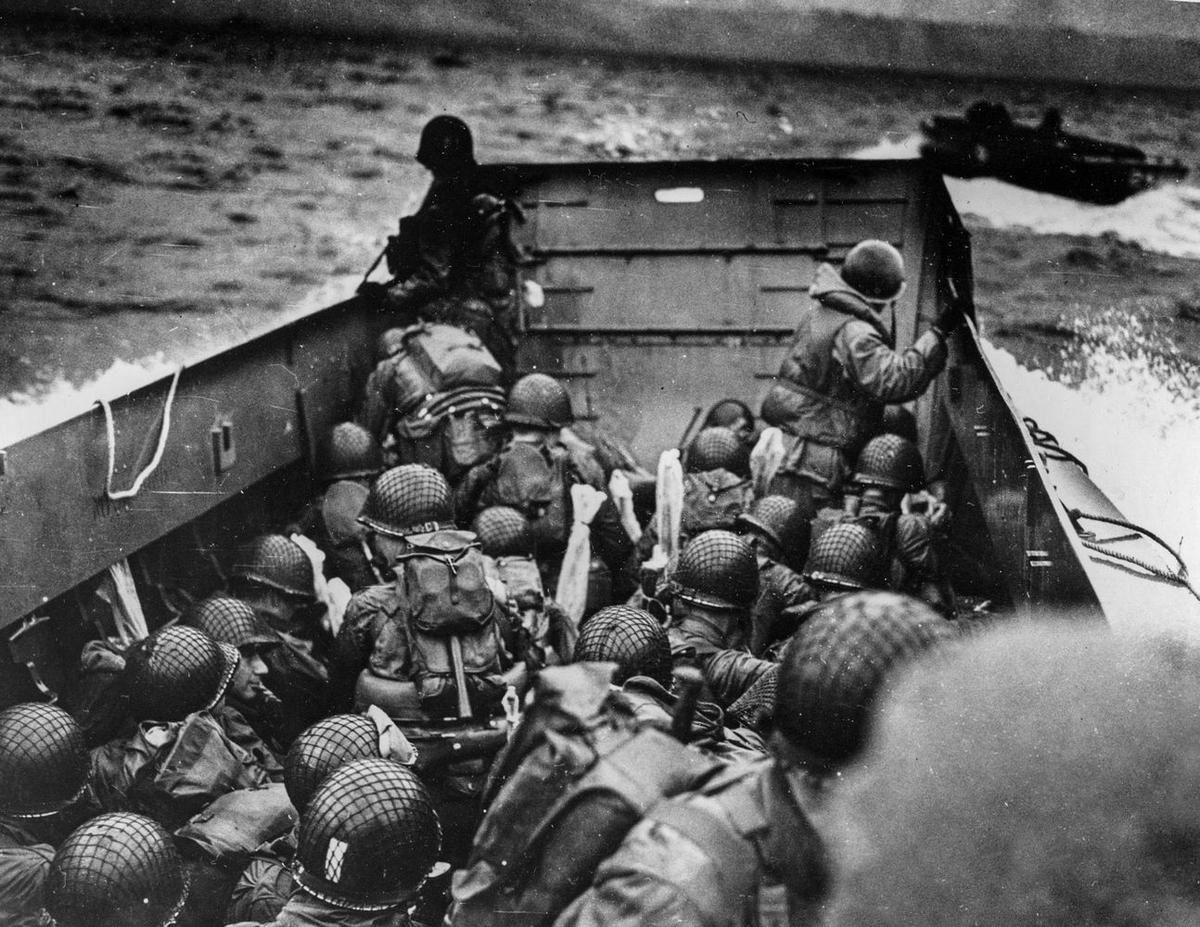The intricate relationship between war and art has undergone significant transformations over the centuries, reflecting shifts in societal attitudes and technological advancements. This narrative examines how the portrayal of conflict in artistic expressions has evolved from glorified depictions of valor to more nuanced reflections on the human condition, influenced by the changing nature of warfare and its impact on society.
Evolution of War Art
As time progressed, particularly starting with the 20th century's World Wars, there was a paradigm shift in how war was perceived and consequently, how it was represented in art. The sheer scale of destruction, loss of life, and the introduction of mechanized warfare during World War I profoundly impacted societal views on war. It ushered in a new era where the previous romanticism and glorification of war began to fade, giving way to a more critical and realist portrayal of its consequences.
Artists started to shift their focus towards the horrors and the human cost of war, highlighting the suffering, grief, and devastation it brings to both combatants and civilians. This stark realism was a departure from the earlier romanticized depictions, aiming not to glorify but to question the rationale behind warfare and to shed light on its tragic outcomes. Pieces such as Picasso's Guernica serve as a powerful testament to this shift, vividly capturing the pain, chaos, and destruction wrought by the German bombing of Guernica during the Spanish Civil War.
The post-World War epochs further cemented this transformation in war art. Conflicts such as the Vietnam War saw an even more direct critique of war in art, with pieces often serving as political commentary or protest. In this context, war art became a means for societal reflection, urging viewers to consider the moral and ethical implications of conflict.
This evolution reflects deeper changes in societal attitudes towards war. The transition from a celebratory to a critical portrayal of warfare in art mirrors the changing dynamics of conflict itself and the recognition of its profound human cost. Through their work, artists not only document the harsh realities of war but also partake in broader conversations about peace, conflict, and the human condition.
The transformation of war art from glorified portrayals to realist depictions underscores a broader societal reckoning with the true nature of war. It highlights how art can serve as a reflective medium, capable of influencing perceptions and fostering a deeper understanding of our world and its conflicts.
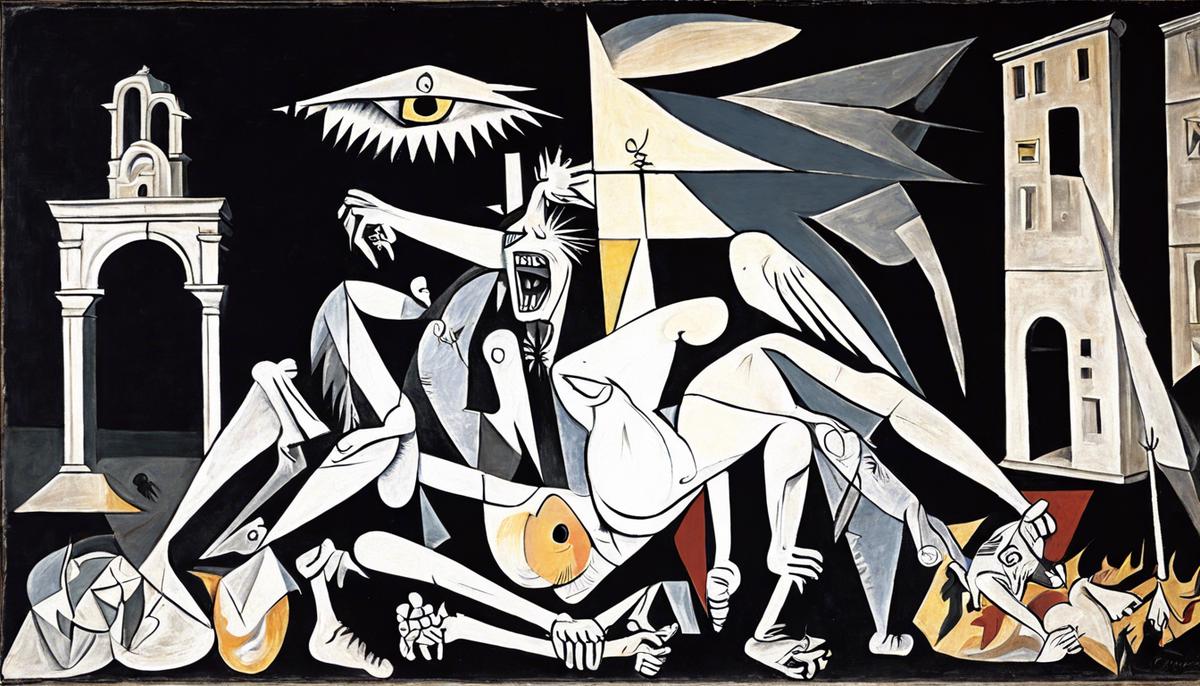
Artists’ Perspectives
Given the diverse tapestry of human experience, it is no surprise that wartime has been interpreted and depicted through multifarious artistic lenses. Among these, often overshadowed by the dominant narratives, lies the vibrant, poignant contributions of women artists, non-European creators, and those who found themselves behind bars or in internment camps during times of conflict.
Women artists have historically offered invaluable insights into the societal and personal impacts of war. Their works frequently explore the repercussions of conflict beyond the battlefield, delving into the emotional and physical aftermath endured by families and communities. The markedly visceral work of Käthe Kollwitz, a German artist, stands as a testament to the profound personal loss inflicted by war. Following the death of her son in World War I, Kollwitz's art unflinchingly confronted grief and despair—themes that, while universal, assume a particular poignancy when rendered through the personal lens of maternal loss.
Similarly, non-European artists contribute perspectives that expand the geographic and conceptual boundaries of wartime art. Their works often reflect not just the conflicts themselves, but also the colonial dynamics that intertwined with them, offering critiques of imperialism alongside depictions of warfare. This is evinced in the arresting visuals created by Vietnamese artists during the Vietnam War, where the amalgamation of personal suffering and political critique challenges viewers to broaden their understanding of conflict impacts globally.
The art emerging from prisoners of war presents a unique narrative. Here, the confines of captivity and the struggle for psychological survival transform scraps of material into profound expressions of hope, resilience, or despair. These pieces serve as a direct portal into the experiences of detainees, often devoid of glorification or heroism but brimming with raw human emotion and survival instincts.
This confluence of diverse artistic perspectives enriches the narrative of wartime art dramatically by offering a fuller, more nuanced picture. It is within this rich diversity that the true essence of these conflicts can be glimpsed—not merely as historical events but as deeply human experiences that transcend time, place, and culture. By broadening the lens through which war is viewed, these often overlooked artists remind us that behind every line drawn in battle, there lies an infinitely complex web of individual human stories.
Incorporating these varied viewpoints not only challenges the traditional narratives centered around glory and valor but also fosters a more inclusive understanding of war's multifaceted impacts. It underscores the power of art as a universal language capable of bridging divides and conveying the profound complexities of human experience in ways that words often cannot. Through their unique vantage points, these artists contribute to a more layered, empathetic, and ultimately more truthful depiction of warfare and its repercussions on humanity.
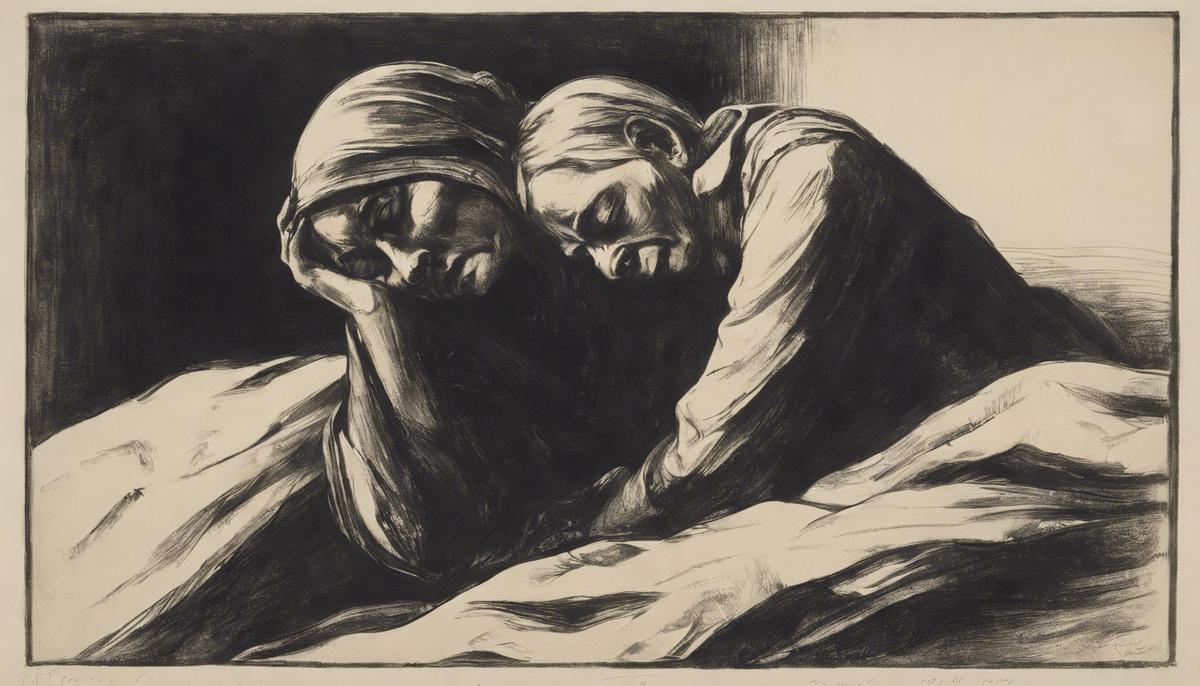
Art as Propaganda vs. Protest
From the brushstrokes on a canvas to the chisels on sculptural work, art has always been a powerful tool for messaging, holding a mirror to society's face, or sometimes, fashioning a mask to cover it. In wartime, this duality becomes profoundly pronounced as art straddles the realms of propaganda and protest, intertwining with politics, morale, and identity.
Propaganda art is commissioned or encouraged by governments and movements to rally public support and boost morale or, conversely, demonize the enemy. These artworks serve as the visual amplification of political agendas, transforming public spaces and home front morale into battlegrounds of hearts and minds. During both World Wars, governments harnessed the power of visual culture to cultivate national unity, encourage enlistment, and conserve food and resources. Iconic imagery such as the stern gaze of Uncle Sam demanding "I Want You" or the resilient fists of Rosie the Riveter became emblematic of the era—messages of duty, sacrifice, and solidarity rendered in bold colors and clear lines.
As art has the power to unite, so too does it hold the capacity to question, challenge, and resist. Protests through artistic means often arise amidst the cacophony of patriotic fervor, providing nuanced critiques of war, its causes, and its devastating consequences. These pieces serve as a counter-narrative to government-sanctioned depictions, revealing the human cost obscured by the glorifying veil of propaganda. Shadowed crevices, somber palettes, and fragmented forms become vessels for artists' dissent, their canvases imbued with messages of peace, sorrow, and a yearning for resolution.
The duality is fascinating. Against the backdrop of conflict, where governments often seek to simplify narratives into binaries of 'us' versus 'them', art introduces shades of gray. It reflects the intricate mosaic of human experience during times of war—the patriotism and the pain, the unity, and the unrest. For instance, Norman Rockwell's Four Freedoms series elevated the American spirit during World War II with ideals worth fighting for, while one ocean away, Käthe Kollwitz's poignant prints mourned the loss and futility of conflict equally experienced by her German counterparts.
Contemporary instances abound. The digital age has expanded both platforms and tactics for propaganda and protest art, from viral social media illustrations supporting troops to blockchain artworks selling for cryptocurrencies to fund war refugees. Street art in conflict zones can become a global symbol overnight, blurring the lines between local grievances and universal human rights movements; Banksy's works in Palestine are apropos examples.
Art remains a salient echo chamber of society's loudest cries and its whispered fears—it heralds victories and grieves losses. Through both propagandist exuberance and somber protest, it crafts a multifaceted narrative of humanity engulfed in warfare. As spectators and participants, our engagement with these pieces entails not just an aesthetic appreciation but a willingness to discern the underlying messages—be they encoded calls to arms or desperate cries for peace.
In navigating through war's dualistic representations in art, one is served a slice of collective memory and aspiration, garnished with a complex assortment of emotions and ideologies. Such is the potency of art; it moves, it molds, it protests, and it propagates. Most crucially, it remembers and reminds—charting a course through past sentiments towards future reconciliation.
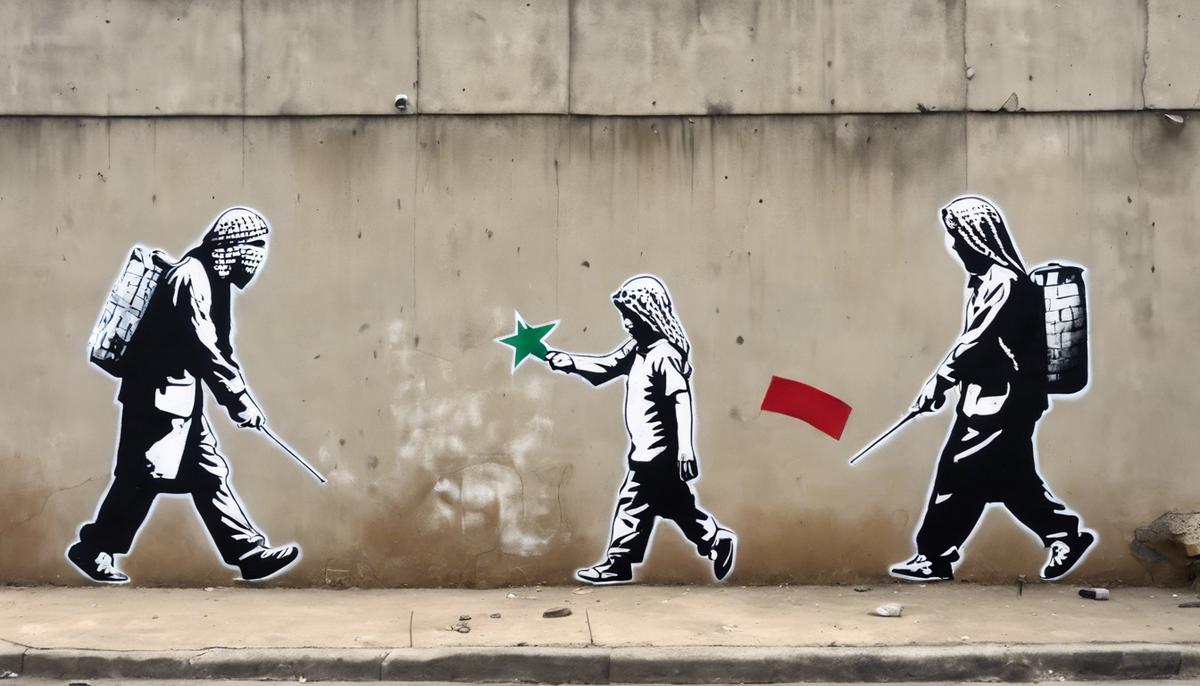
The Impact of War Art on Society
The influence of war art on society stretches far beyond the immediate emotional impact it imparts on its audience. As these visual narratives permeate through time, they etch themselves into the collective memory of communities and nations, significantly shaping societal attitudes towards conflict. The poignant portrayal of wartime hardships and the resilience of the human spirit, as captured by artists, resonates through generations, fostering an appreciation for peace and a critical perspective on the notion of war.
Museums and exhibitions play a pivotal role in this process by acting as custodians of wartime art, ensuring that these crucial pieces of history are preserved and accessible. Through carefully curated collections that span the spectrum from depictions of victory to accounts of loss and suffering, museums offer a window into the diverse experiences of war. They present a visual narrative that compellingly communicates the complexities of conflict, free from the constraints of language and literacy. In doing so, they invite audiences to engage with past realities, cultivating a deeper understanding and empathy that textbooks alone cannot achieve.
Exhibitions dedicated to wartime art offer significant opportunities for reflection and dialogue. By bringing together works from different artists, periods, and conflicts, they foster comparative analyses that highlight the universality of certain wartime experiences across cultures and epochs. Viewers witness the recurring themes of sacrifice, loss, hope, and resilience, echoing the perennial nature of human conflict and the enduring spirit that confronts it. Such exhibitions not only enlighten us about the past but also encourage contemplation on current and future engagements in warfare.
The educational aspect of wartime art is substantial. In academic settings, the incorporation of art analysis offers students a more nuanced appreciation of historical events, enabling them to engage with the subject matter on emotional and intellectual levels. This humanizes history, turning abstract dates and statistics into tangible human experiences. Through critical engagement with wartime art, students learn to analyze perspectives, discern propaganda from protest, and appreciate the power of visual media in shaping public opinion and memory.
The digital age has transformed access to wartime art, democratizing it in unprecedented ways. Online archives, virtual tours, and digital exhibitions make it possible for individuals from across the globe to explore collections otherwise unreachable. This global accessibility furthers the educational reach of wartime art, allowing it to inform and influence a larger audience about the complexities and consequences of armed conflict.
In addition to formal settings like museums and schools, wartime art impacts public spaces and popular culture, manifesting in murals, films, literature, and fashion. These representations ensure that the memory and lessons of past conflicts continue to resonate in public consciousness, influencing attitudes towards peace, patriotism, and the human costs of war.
As society evolves, so too does its engagement with wartime art. New conflicts generate new artworks, which in turn will take their place in museums, exhibitions, and educational curricula, contributing to the ongoing dialogue between past and present. Through these various modalities, wartime art endures as a potent medium through which society recalls its past, critiques its present, and envisages its future.
The role of wartime art in shaping societal attitudes towards conflict is a testament to its power, not just as a form of remembrance but as an active participant in the ongoing discourse on human values and the persistence of hope amidst devastation. It stands as a tribute to the spirit of those affected by war and a cornerstone upon which future generations can grasp the gravity of conflict's aftermath, fostering a more informed, empathetic, and peaceful global community.
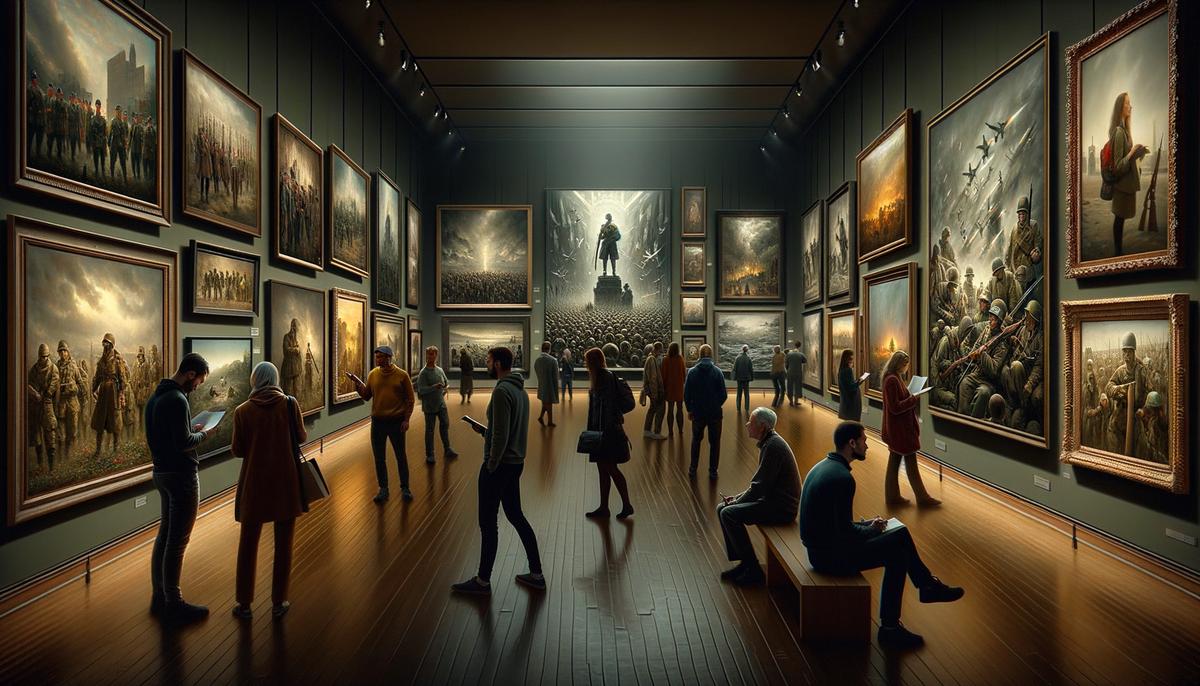
Technological Advances and War Art
The advent of technology has altered the canvas of war art, introducing new tools and mediums that have expanded the realm of expression for artists. The introduction of photography in the 19th century was one of the first major technological advancements to impact the depiction of war. No longer confined to the interpretations of painters, the camera provided an unflinching eye that could capture moments of conflict with stark realism. The resultant photographs brought the front lines to the public in an unprecedented manner, exposing the harsh realities of war and challenging previous romanticized representations.
As photography evolved, so too did its role in war art. Photographers like Robert Capa and Dorothea Lange pushed the boundaries of war photography, capturing images that conveyed not just the physical toll of conflict but the emotional and psychological scars as well. Their work demonstrated photography's unique ability to
